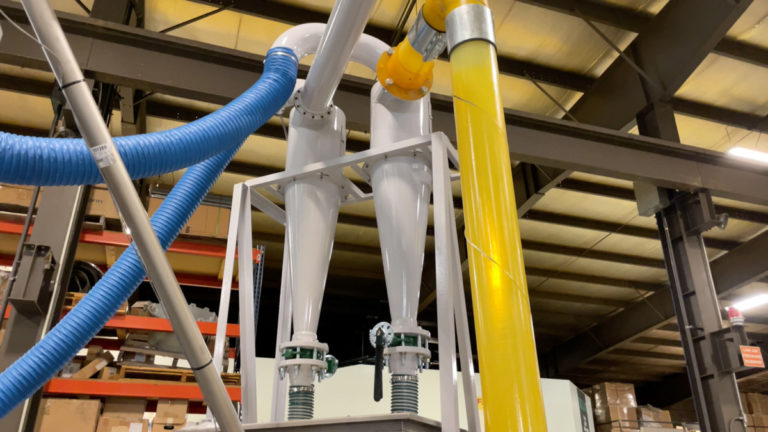Guyson has a unique understanding on how to keep your product finishing at the most productive level, while not wasting your media.

There is a very delicate balance in pulling out the dust, and large fine elements, while leaving the original media for reuse.
Cyclone separators are used in the blast industry for the separation of abrasive dust particles from the air stream. The proper design and shape of the cyclone are crucial to achieving effective dust collection and reducing wear and tear on blast equipment. Guyson Corporation has studied the importance of cyclone shape in the blast industry and has built and tested until their optimal cyclone design.
A well-designed cyclone separator, such as the Guyson HE-12, will significantly improve the efficiency and effectiveness of your blast process.
The Guyson designed cyclone separator can remove up to 99% of abrasive particles from the air stream, extending the life of blast equipment and reducing maintenance costs. Abrasive particles, such as sand, grit, and steel shot, can cause significant damage to blast nozzles, hoses, and other equipment if they are not removed from the air stream.
As a general rule, the inlet diameter of the cyclone should be between one-third and one-half of the cyclone diameter. This maintains a suitable airflow rate and velocity for efficient particle separation. The cone angle should be between 20 and 30 degrees, and the height of the cyclone should be at least three to four times the diameter of the cyclone to ensure that airflow velocity is maintained throughout the length of the cyclone.
A great example of how precise a Guyson Reclaim System can be is when we work with a very fine media such as 500 mesh (500 particles fit into 1 micron). The media itself is almost dust, and it is very important that larger and smaller fines are pulled from that media.
When using such fine media, we employed two of our HE-12 cyclones, rather than one. One cyclone hose is attached bottom of the cabinet, while a second pulls floating dust within the upper section. Guyson included a vibratory classifier as the a last line of filtration, but also to help keep the 500 mesh media from clumping while running through the system.



